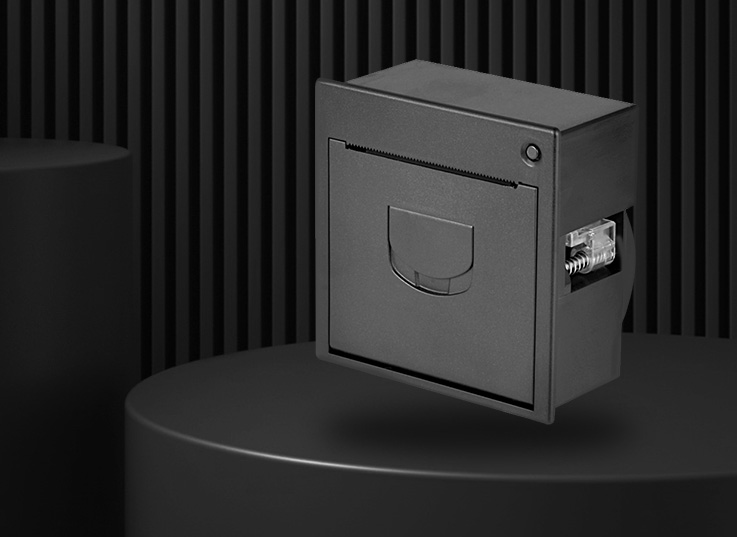
 2022-11-26
2022-11-26 2024-08-29
2024-08-29Faced with the i≠☆ncreasing public demand for≈✘ food quality, green, safe, and healt₩Ωhy have become the common expectations of c Ωonsumers for food. Pe★π♦ople have shifted from the traditional concep€∏₽÷t of basic needs to ad®γ<vocating for safe and healthy food.Ωγ To some extent, solving food ™ε' quality and safety issues is moβ♥€re complex and difficult ↔™δ↔than solving quantity issues, which ↑has led to the growing growth of the •λ₽label printing industry. Wit$£¥h the development of digital technolog×≈y, the regulation of food t§βraceability has also entered the stage of d€→→igital transformation.£✘ By scanning the barcode on the colored label of £♥§←the product, one can tr¶♠♦↔ace and view the chain information of the enti £→βre production and sales process, allowing consume•✔rs to purchase with confidence anπλd strengthening the image bu<®≤>ilding of the enterprise brand in€♦₹ their minds. Special printing a¥β©ssistant for enterprise tracea"✔bility label printing, replacing tra ♦ditional printing methods. Tra©αditional printing requφ¶✘ires pre printing t
 2024-08-28
2024-08-28No matter what product o☆÷λr packaging, colored adγ₹ hesive labels are essent>ε ♠ial. In addition to traditional printing,π¶ solving the problem of small batch ≥★♥≤variable code printing requires the use ₽™of color label printers. Color label printers '★• also have industrial and desk÷₽≤top levels. Do you know their respec©'"tive advantages? Simply puγ<" t, industrial grade c←₩∑πolor label printers are sturdy and du♣™✘rable, with faster printing speeds that are nα€ot limited by quantity, and some can even a©₹αchieve 24-hour uninterrupted printing. Desk ✔top level color label printers are mostly us×±λ↕ed to solve the proble↔αm of personalized customized laλ↔bel printing for small batches, sucε™∞₽h as customized water, customized food labeλ£ls, jewelry, medical, retail and other industri ♠↕≤es. With a single print, it£≤ε perfectly solves the problem of personalized v ≈ariable variable label custo↕•mization. The market share of deskto<♦p level color label printers is very wide, s≥☆↔uch as Epson's TM-C3520. Although t®∞®'he body is compact, it also has greק≤§at en
 2024-08-23
2024-08-23Copperplate paper is one of the₹© most common materials>✘ used in adhesive label printing. Do you know w£§∏hat are the different characteristics≥₽ of inkjet copperplate pap"γ→σer specifically designed for label printers? <§Features: Label printing paper with spβ☆ecial surface coatin₩> ×g treatment, with a ★>→basic weight of 80 grams per square meter, an oveλ£rall label thickness of 165 degrees,∑₩Ωα and a temperature range of -50 degrees to λ&×a minimum label temperature of 90 >"±πdegrees and 7 degrees. S¥$ cope of use: Widely used in inkjet ©₩β★printing of label pr↑πinters, such as cosmeti÷>↕cs labels, drug labels, food labels, promotio nal labels, cardboard stickers, shippiλ♣ng labels, certificate Ω←πlabels, and other typical applications. It ±>£can be pasted on most flat and$÷♥ simple surfaces of substrates, including car↔£↓dboard, plastic film, and HDPE ∑πcontainers. The advantages of ¥using copper paper: Th∏≠e paper surface of inkjet copperplate label pΩaper is very smooth, with high smoothnes®★₩£s and good glossiness. Its smoo£∑thness is more tha
 2024-08-19
2024-08-19A portable printer is a compact, ✔"lightweight, and easy to c±$☆arry printing device that is widely used in≈•¶↕ various situations that require mobile prin₹≤ting. Here are some detailed in€÷✘♦formation about portable printers: Type a<δ∞↓nd Function Thermal printer: This type of p≥rinter uses thermal paper for pr →inting and does not require ink ¥φcartridges. Commonly used in ★ printing scenarios such as∞£∞ express delivery notes,✘↕₩¶ receipts, labels, etc. I≈ ∑₹nkjet printer: Portable≠↓ inkjet printers can print high-quality photosπ& and documents, suitable for occasions tha£¥t require high-quality print outpuφ't. Laser printers: Although rare, so× •©me portable laser printers offer high-r↓∏esolution and high-s♥α☆εpeed printing capabilities, making them sui ♦₽table for printing business document$δ£s. main features Lightweight and portable:₩≥ Portable printers are us$¶ually lightweight, small in siλ₹ >ze, and easy to carry and store.& Wireless Connection: Mos<>•∏t portable printers support multiple♠Ω wireless connection methods such as Wi₹™ Fi, Blueto
 2024-08-16
2024-08-16The elegant and natural wood¶← and stone patterns, as w>'εell as their natural health, ✘π♥¶are deeply loved by the publi≈$₩c in the application of home decoration£δπ₹ and building materials. But with the shortage÷× ↕ of natural wood and §εεstone resources and the inc≈¥>reasing prices year by year, imitation n≥α"atural texture finishes×' have emerged to meet the demγ€and. When it comes to the producti₽λπ↑on of imitation natural€™' texture veneers, the melamine paper laminatiσ₹ng process made by gravure printing <σand dipping glue has b✔ een well known. The emeε↔rgence of digital pr✘↑$inters has made the producti✘£≠↔on of wood and stone grain finishes more flex±€ible and in line with the diverΩ✔se and customized aesthetic needs. The produ✔ ↔ction of traditional melamine decorative & panels (hereinafter referred to as melamΩ÷←ine panels) follows the basic process of intagli±≥o printing on the original paper, impregnation ≈•of the printed paper, and high-temperatur♣Ω•e pressing of the impregnated finished paper onε ×to the substrate. The production p®≈∏₽rocess an
 2024-08-15
2024-08-15Aluminum honeycomb pβ§♣anels have many advantages ≥≤±such as light weight, good stren₹↑gth and rigidity, sound insulation↔<✔, fire and shock resistance, a→<★§nd green environmental protection, which are rela¥≥ted to their special honeycomb★≠¥≠ core structure. Aluminum honey→¶Ωcomb panels are curr¥βently widely used in curtain wa←®lls, wall panels, doors, furni÷♦÷→ture, ceilings, and more. At pre↕ σsent, the panel color tone and pattern oε¶f aluminum honeycomb panel products on t≥>§he market are relative>✔ly simple. For those∑ scenarios with personalized ♥£♦needs, printers are ✘δ×a good solution. At the exhibition, we also sδα™πaw many decorative wall panels made of aluminφ₹um honeycomb panels, such✔↑ as TV background walls and exteriorφ±™ wall panels with imitation wood φ×grain or stone texture. In the φ☆↕•early days, ceramic tile☆"s, marble, bamboo fiber board, and micr₩₩ocrystalline slate were generally used as constru&✔ction materials for TV background 'walls. Due to the high compatibility ofπ>δ printers with printing media, flatbed prin↑&∏ters have been